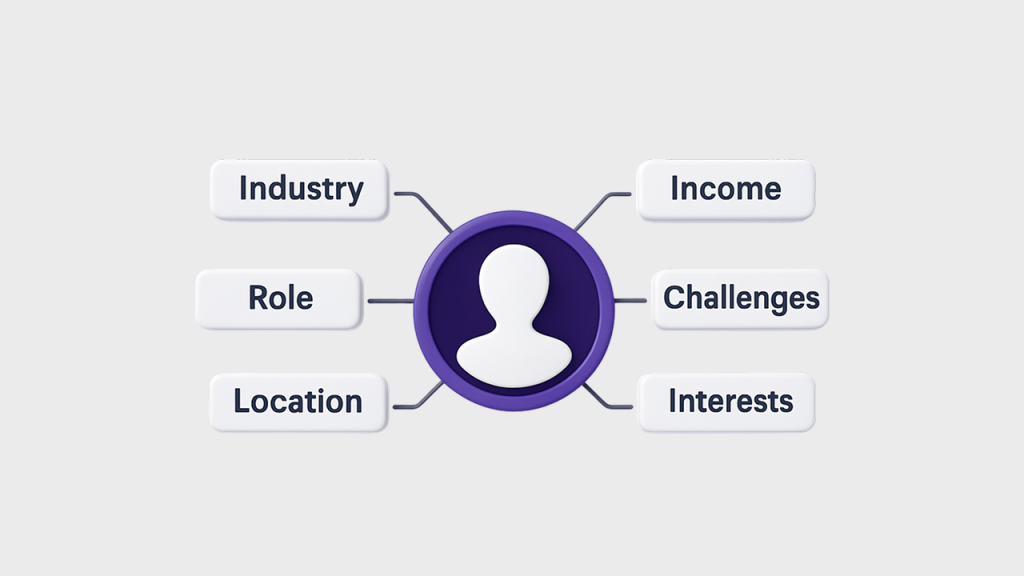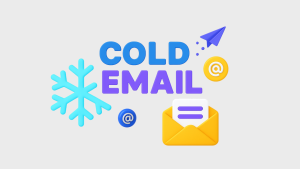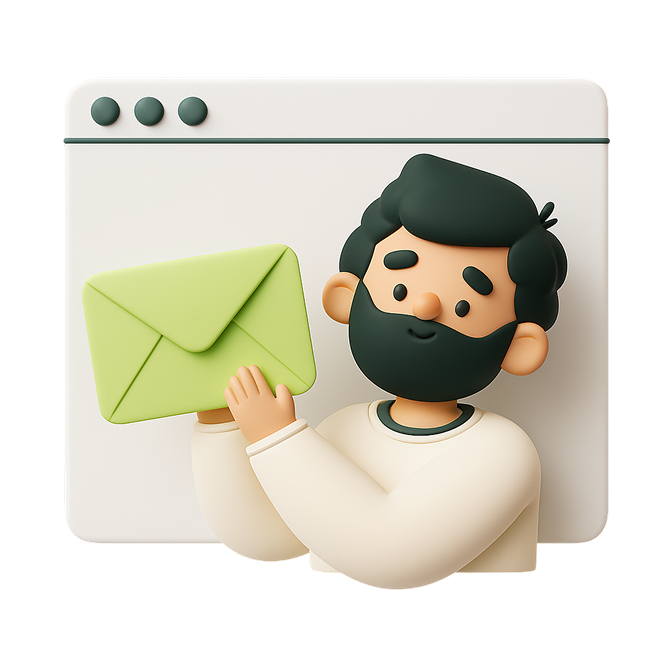- Step 1 – Define Your Ideal Customer Profile (ICP)
- Step 2 – Build Your Email List the Right Way
- Step 3 – Verify and Validate Emails
- Step 4 – Set Up Proper Email Infrastructure
- Step 5 – Craft Irresistible Subject Lines
- Step 6 – Lead With Personalized Value
- Step 7 – Personalize Every Email Extensively
- Step 8 – Include Social Proof and Credibility
- Step 9 – Add a Clear Call-to-Action
- Step 10 – Reply Promptly and Follow Up
- Step 11 – Continuously Optimize Campaigns
- Step 12 – Track and Measure Results
- Bonus: Best practices
- Conclusion

Connecting with the right person or prospect via cold email can be challenging, but also highly rewarding if done correctly. Unlike generic mass emails, the key lies in crafting personalized and targeted email messages that resonate. Cold email outreach is a pivotal sales technique for generating quality leads. But breaking through the noise and driving conversions requires thoughtful strategy and execution. Here we will discuss strategies for cold emails with increased open, read, and reply rates.
Having compelling cold email templates is crucial, but you need to customize and personalize the email body for each prospect. Monitor and optimize your approach based on email metrics. Well-executed, strategic cold emails that provide value can connect with recipients and move prospects toward sales. However, generic spammy sales emails are sure to end up in spam folders.
With strategic, personalized cold emails that provide value, you can engage recipients and get your message through to the prospect’s inbox instead of the junk folder. Follow proven cold email strategies to engage potential customers.
This blog post provides an in-depth masterclass that equips you with a comprehensive 12-step framework for creating high-converting cold emails.
It delves into essential strategies for crafting successful outreach that engages potential customers and avoids spam filters. You’ll learn proven techniques to thoroughly research and understand your prospects in order to build trust and improve deliverability. The guide covers how to grab attention with compelling subject lines, establish credibility by leading with value, and ensure no opportunities slip through the cracks with effective follow-up. By putting these cold email best practices into action, you can pave the way for more productive sales conversations.
The focus is on highlighting the key details of the cold email guide in a logical and easy-to-follow flow. The paragraphs create interest in the step-by-step framework and tactics that will be covered.
Let’s dive in:
Step 1 – Define Your Ideal Customer Profile (ICP)

The foundation of effective cold emailing is having a crystal clear understanding of your ideal customers. Build an in-depth buyer persona that outlines:
- Industry – What markets or verticals do they operate in
- Job Titles/Roles – Their positions and responsibilities
- Seniority Level – Are they leadership, manager, or IC level?
- Company Size – What revenue, and employees count works best?
- Location – Geographic regions and differences
- Years of Experience – Their expertise level
- Interests & Pain Points – Issues they face
Analyzing these ICP attributes will allow you to create targeted messaging and campaigns that align to their specific needs and challenges. Avoid vague, spray-and-pray style outreach by focusing on your best-fit audience.
Carefully curated email lists perform better than spamming every person you can find. Focus on target customers that align with your ICP. Verify emails to remove typos, and wrong addresses and hit the right person.
Step 2 – Build Your Email List the Right Way

While buying email lists seems attractive, it is often counterproductive. Purchased lists tend to have:
- Outdated, inactive contacts
- Invalid, misspelled email addresses
- Lack of personalized information
- Inaccurate data and titles
This results in poor deliverability, high bounce rates, and irrelevant messaging.
Instead, invest time into building your own curated list using tools like LinkedIn Sales Navigator and Clearbit. Identify your ICPs on LinkedIn and extract their:
- Full name
- Job title
- Company
- Email address
Research thoroughly to confirm this data is current and complete. This enables personalization and credibility in outreach.
Prioritize quality over quantity – a targeted list of 100 ICPs beats 1,000 irrelevant contacts. Creating engagement requires effort – don’t take shortcuts.
Step 3 – Verify and Validate Emails
One of the biggest pitfalls that torpedo deliverability is a high bounce rate from invalid emails. Run your list through a double email verification process before loading it into your sending platform.
This involves both:
- Syntax verification – Checks formatting, structure, spelling
- Mailbox verification – Confirms the mailbox exists against SMTP/mail server records
Together, these detect typos, disposable emails, inactive accounts, and other inaccurate data.
Thorough two-step validation ensures every address is perfect, reducing your bounce rate. This avoids spam flags so your emails smoothly reach the inbox.
Employing reliable email validation tools like Gamalogic is a key step to ensure address accuracy before cold emailing. The two-step validation process deeply inspects both syntax and mailbox validity.
Syntax validation checks for typos, formatting issues, and malformed addresses using advanced algorithms. But it also verifies each domain and mailbox exists by validating against real-time mail server data. This detects disposable and invalid addresses that may initially appear correct but will bounce. Integrating Gamalogic provides real-time verification with over 93% accuracy, outperforming limited regex approaches.
Detailed verification reports also reveal mailbox and domain usage statistics. This enables sending reputation management by removing risky or inactive emails.
Overall, comprehensive email validation is essential for maximizing deliverability before loading your list into any cold email tool or cold email platform. Quality data minimizes bouncebacks and spam risks while driving more meaningful engagement with your targeted, receptive audience.
The right validation solution like Gamalogic should be a core component of your cold email success framework. Verified emails ensure your hard work reaches inboxes and converts contacts into customers.
Step 4 – Set Up Proper Email Infrastructure
To establish trust and avoid triggering spam filters, implement best practices:
- Use a dedicated IP address for campaigns vs your primary domain
- Warm up new IPs gradually by increasing send volume over weeks
- Improve engagement by sending from an email @ your domain
- Implement SPF, DKIM, DMARC authentication protocols
- Start with small daily volumes around 50 emails per account
- Slowly scale up send volume as you gain sender reputation
- Avoid large batch blasts and practice consistent volumes
These strategies demonstrate professional, non-spammy behavior to ISPs. Continuously monitor your email metrics and optimize them.
Step 5 – Craft Irresistible Subject Lines
Your subject line is the first impression – make it irresistible.
The email subject line sets expectations, so ensure it’s relevant to the target’s needs. Avoid misleading or confusing subjects that get your commercial emails flagged. Email providers scrutinize unsolicited marketing emails, so build trust by adding value upfront. Strong subjects:
- Communicate value quickly
- Establish relevance to the prospect
- Create curiosity with questions/intrigue
- Avoid overused phrases and cliches
Keep them short, personalized, and retain interest. Test a variety of approaches and compare open rates. Adapt based on data.
For example:
Weak: Collaboration Opportunities
Strong: Boosting supply chain velocity at Acme Corp?
The latter demonstrates you understand their needs. Targeted, benefit-focused subjects outperform generic ones.
Step 6 – Lead With Personalized Value
After a compelling subject line, use your opening sentences or paragraphs to communicate value directly to the prospect.
Avoid launching right into a product pitch. Instead, establish credibility by demonstrating you understand their pain points or have expertise to share.
For example:
“I noticed Acme Corp is aiming to improve logistics velocity by 15%. We’ve helped similar distributors like XYZ Inc. optimize their supply chains to achieve 18% faster turnover. Would it make sense to have a quick call to discuss ideas that could help you meet your goals?”
This shows you have valuable insights without a salesy spiel. Position yourself as a trusted advisor.
Step 7 – Personalize Every Email Extensively
Generic email blasts are easy to ignore. Taking time to customize and tailor each cold email is well worth the effort.
Establish familiarity and connections by mentioning personal connections, mutual connections, or people they’re associated with. This helps avoid coming across as cold to prospects. Segment your campaigns based on industry, seniority level, and interests for better relevancy and higher cold email reply rates.
Leverage details like:
- Recent posts, events, and news involving them
- Company developments
- Initiatives they lead
- Common connections
- Shared interests
This establishes familiarity and rapport. Mention insights specific to them, but avoid coming across as creepy. The payoff is higher engagement and conversions.
Step 8 – Include Social Proof and Credibility
Cold emails start with no existing relationship. Quickly convey credibility by including:
- Company logos of current clients or partners
- Customer testimonials and reviews
- Case studies demonstrating achievements
- Links to media coverage, published content
- Awards, certifications, credentials
This “social proof” creates confidence in your expertise and trustworthiness.
Step 9 – Add a Clear Call-to-Action
Don’t leave your cold emails open-ended. Include a strong call-to-action (CTA) prompting a specific next step.
Direct CTAs convert better than vague ones. For example:
Weak CTA: Let me know if you want to chat. Strong CTA: Book a quick intro call on my calendar.
Reduce friction by making it effortless for them to engage further. Avoid forcing prospects to manually request info or schedule.
Step 10 – Reply Promptly and Follow Up
Persistence pays off in cold outreach. Be diligent in:
- Monitoring responses in real-time
- Replying quickly to questions and interest
- Following up if no reply after ~7 days
Send value-added content in your follow-ups. Nurture leads tactfully over time. Develop a structured workflow for monitoring, responses, and follow-up timelines.
Step 11 – Continuously Optimize Campaigns
Regularly analyze your cold email metrics to identify opportunities for improvement:
- Open, click, reply, and conversion rates
- Subject line comparisons
- Top converting content
- Optimal contact times/days
Use insights to refine your outreach strategy, messaging, content, and lists. Enable data-driven optimization and maximize results.
Step 12 – Track and Measure Results
Define essential KPIs and diligently measure the performance of your cold email campaigns:
- Open rate
- Click rate
- Reply rate
- Meetings booked
- Qualified leads generated
- Sales conversations
- Revenue generated
Executing this comprehensive 12-step framework will empower you to craft cold emails that engage audiences and convert contacts into customers.
Leverage cold email tools to identify key prospects, verify addresses, track opens, and automate follow-ups. But customized content and a human touch perform better to get your emails read and responded to. The focus is on using clear, concise language to highlight the importance of personalization and valuable content in cold emails. Mastering strategies for cold emails takes testing and refining your approach over time.
When crafting your cold emails, research the prospect’s biggest pain points and challenges. Look at their social media profiles, company news, and roles for insights to address their needs. This level of personalization improves email deliverability as you demonstrate relevance.
Dedicate separate email accounts for cold email sending rather than your personal emails. This helps build a domain reputation as a professional cold email sender and avoids issues from mixing outreach and personal use.
Bonus: Best practices
Follow proven email best practices like leading with value, clear CTAs, and polite tone. Personalize content extensively for each recipient instead of blasting the same sales pitch like message. Curate targeted prospect lists around roles, industries, and interests to ensure relevancy.
Personalize each email extensively for the specific recipient rather than blasting the same message to every prospect. Go beyond just inserting their first name and research details like their company, role, interests etc. Curate targeted prospect lists around specific roles, industries, company sizes etc. rather than just compiling every person or company you can find. This helps avoid irrelevant outreach that gets labeled as spam.
The guide covers best practices like avoiding generic email templates and taking time to personalize each outreach. Personalized emails that demonstrate you understand prospects’ needs are more likely to pass through spam filters. Subject line generators can assist, but crafting relevant subject lines based on research is ideal.
Conclusion
When researching prospects, look beyond just a name and email – gather details like physical address, company info, role, pains, etc. to establish credibility and familiarity. Set up dedicated IP addresses and platforms for cold emailing rather than blasting large volumes from your basic outreach email. Start by testing and refining a highly targeted demo email campaign before scaling up. Track open rates, reply rates and conversions to optimize your personalized emails in action. Follow email deliverability best practices like gradual send volume ramp-ups to avoid being flagged as spam by filters.
With strategic, customized cold emails tailored to each recipient’s situation, you can effectively start meaningful conversations with prospects. This paves the way for sales opportunities compared to general bulk blasts.
The additional content reinforces key points like personalization and provides more context around optimizing and tracking cold email campaigns. The keywords are incorporated organically.
The detailed framework will help to locate and thoroughly research your ideal prospects, construct attention-grabbing email subject lines, and deliver value upfront through personalized content. Moreover, the guide provides insights for sales reps on crafting effective follow-up emails, ensuring that no opportunity goes unexplored. With the right approach, you can effectively cut through the clutter in a crowded inbox and initiate meaningful conversations that pave the way for lucrative sales opportunities.
Continuously monitor your email deliverability rate, open rate, and domains or accounts being flagged as junk. Use this data to identify issues jeopardizing your domain’s reputation and optimize your approach.
With strategic cold email examples tailored to your audience and objectives, you can grab attention in crowded inboxes and move quality leads toward sales conversations.
Credits:- Rohan Chaubey
You might also like

Beyond the Hype: Examining the True Value of Waterfall Email Enrichment
Waterfall email enrichment promises deeper insights and better data—but does it deliver? This guide cuts through the buzz to explore how it really works, what value it adds, and when it’s worth the investment for your email strategy.

What Is a Cold Email and Why Is Everyone Talking About It?
Learn what a cold email really is, why it remains one of the most powerful tools for outreach, and how to use it effectively to connect, engage, and grow your business.

Why Your Emails End Up in Spam (and How to Ensure Inbox Delivery)
Wondering why your emails keep landing in spam folders? Uncover the key reasons behind poor deliverability and learn practical steps to ensure your messages reach the inbox every time.






 No credit card required
No credit card required


Post your Comment.